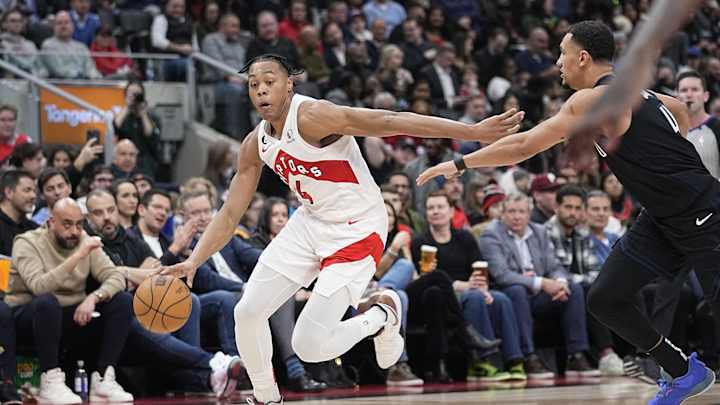Nick Nurse Explains What He Wants from Scottie Barnes in New Role Alongside Jakob Poeltl

In this story:
For the enigma that is Scottie Barnes, positional fluidity is as much a quirk in his game as it is a fact of life on this Toronto Raptors roster.
By now, Barnes must be used to all the changes he's seen this year. Coming into the season the Raptors wanted him playing some type of jumbo-sized point guard. The goal had been to move Fred VanVleet off the ball a little more and let Barnes run the point more often. When that didn't go quite as well as the team had hoped, things changed. Just after New Year's, Barnes shifted over to a quasi-center spot, acting as Toronto's screener and playmaker out of the pick-and-roll.
Now Barnes' role is about to change again.
The addition of Jakob Poeltl at the trade deadline will displace Barnes from his offensive center spot and move him back into the murky middle as some strange type of modern NBA wing player.
What exactly will that mean?
For one, it probably means more opportunities on the perimeter. Barnes isn’t exactly a very good three-point shooter, but Toronto needs him taking rhythm threes. If the ball is swung around or kicked out to the corner, Barnes has to take it.
“I think (Pascal Siakam, Barnes), and O.G. included, need to up their volume of 3s," Nurse told reporters Wednesday following practice. "They’re gonna be on the perimeter more than they were. I think the opportunity should be there. If you’re playing against us, you say, ‘OK, Poeltl’s not a 3-point shooter. Where does Scottie fall on that line? Let’s pack it in (the paint).’
“To me, those guys have to shoot it with confidence. O.G. is definitely a good shooter. Pascal’s a good shooter. And Scottie certainly makes the catch-and-shoot ones. All three have to raise their volume of looks just so we can keep people honest and open up space for driving and cutting later on.”
Barnes’ catch-and-shoot numbers have been OK this season. He’s at 32%, up from 29% last season, and Toronto is hopeful that number will go up with more reps.
But even if Barnes’ offense looks a little clunky in the half-court for the next little while, the Raptors want to see him make the most of his early offense opportunities. Grab it and go, they’ve told Barnes.
“He just needs to be assertive,” said Nurse. “To me, when he’s bringing the ball up the floor, into the paint to make a play for himself or someone else is where he needs to get to on a regular basis.”
“It’s transition, semi-transition is a good word,” Nurse added. “Even if it’s five-on-five, the defense isn’t set yet, where you’re trying to get some early offense off that.”
Barnes’ numbers in transition are down quite a bit this season. He’s generating just 0.94 points per transition possession this year compared to 1.07 last season. He’s also seen his early shot clock opportunities drop from about one third of his shot attempts last year to about one quarter this year.
Even if Barnes isn’t scoring on those attempts, the Raptors need him taking the ball aggressively into the paint, getting early paint touches, and using his playmaking skills to create for himself and others against semi-set defenses.
The next 23 games are going to be a learning experience for Barnes and this Raptors team. The goal, of course, is to compete, but maximizing Barnes’ future potential is far more important than anything that happens this year.
Barnes has thrived for the better part of the last two and a half seasons without a traditional center alongside him. Seeing how he fairs in whatever this new role looks like should answer some questions about Barnes’ long-term position on this Raptors roster.
Further Reading
Raptors face another difficult playoff push with plenty of learning experiences from last season
Jakob Poeltl's offensive explosion vs Magic leads Raptors into much-needed break
Raptors seeing early defensive returns as Jakob Poeltl finds his footing in Toronto's system

Aaron Rose is a Toronto-based reporter covering the Toronto Raptors since 2020. Previously, Aaron worked for the Eau Claire Leader-Telegram.
Follow AaronBenRose